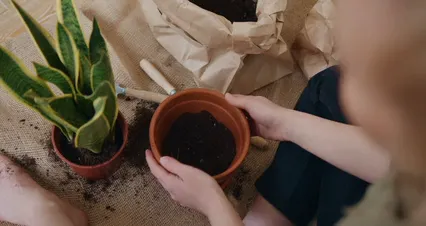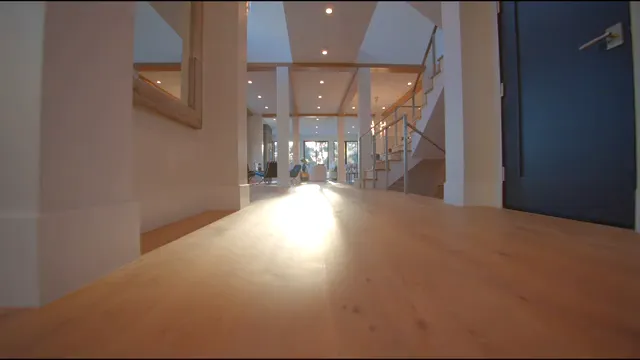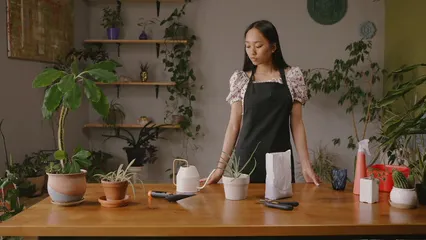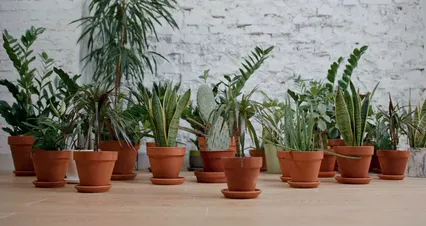

The Ultimate Guide to Plant Pots: Choosing the Right One for Your Greenery
Introduction
Plant pots are essential for both gardening and indoor decor. They not only house your plants but also enhance your living space. With a broad range of options available, picking the right pot can be overwhelming. This article will focus on different types, materials, and tips for selecting the perfect plant pot that suits your greenery’s needs.Summary and Overview
Choosing the right plant pot is crucial for your plants’ health and your home’s aesthetics. The right pot can impact drainage, root growth, and overall plant vitality. In this article, you’ll discover various types of plant pots, from ceramic to biodegradable options. We’ll also explore their functions and how they complement your plant care routine. Additionally, you’ll learn about maintenance tips to keep your pots in top shape. Get ready to transform your indoor gardening experience with the right tools and knowledge! Speaking of tools, don’t forget to grab some Garden Gloves to keep your hands clean and safe while you’re potting your plants!Types of Plant Pots
Ceramic Pots
Ceramic pots are a popular choice among plant enthusiasts. Their aesthetic appeal often enhances any space, adding a touch of elegance. Available in various finishes, from glossy glazed to rustic earthenware, these pots cater to diverse styles. One key benefit of ceramic pots is their weight. They provide stability, preventing top-heavy plants from tipping over. However, they can be a bit heavy when filled with soil. Drainage is another consideration. Most ceramic pots come with drainage holes, which help prevent waterlogging. This is crucial for maintaining healthy roots. On average, ceramic pots can last for many years, making them a wise investment. Their popularity continues to rise in the gardening market, confirming their status as both functional and decorative plant containers. If you’re looking for a stylish option, check out this Ceramic Plant Pot that suits your taste!Plastic Pots
Plastic pots are a favorite among gardeners. They are lightweight and budget-friendly, making them easy to handle. You can find plastic pots in various sizes and colors, which allows for personalization in your plant displays. Whether you prefer a vibrant hue or a classic black, there’s a pot for everyone. One significant advantage of plastic pots is their recyclability. Many are made from materials that can be recycled, which is a plus for eco-conscious gardeners. Compared to ceramic or metal pots, plastic options tend to be less expensive. This makes them ideal for beginners or anyone looking to expand their indoor garden without breaking the bank. Statistics reveal that around 70% of indoor gardeners opt for plastic pots. This popularity can be attributed to their versatility and practicality. They can withstand the elements, making them suitable for both indoor and outdoor use. Just remember to check for drainage holes to keep your plants healthy and thriving! And if you’re keen on maintaining those pots, consider a Plant Pot Cleaning Brush to keep them spotless!Metal Pots
Metal pots bring a unique charm to your gardening game. Made from materials like aluminum and galvanized steel, they offer remarkable durability. These pots are less likely to crack or break compared to ceramic options, making them a long-lasting choice for any gardener. One of the standout qualities of metal pots is their style. They come in various finishes, from sleek modern looks to rustic designs, fitting into any décor seamlessly. However, they do have some challenges. Metal can heat up quickly in direct sunlight, which may affect plant roots. It’s essential to monitor moisture levels, as drainage holes may vary in design. Trends show an increasing popularity of metal pots, particularly in urban gardening. Many people appreciate their aesthetic appeal and durability. If you’re looking for a stylish and functional option for your plants, metal pots could be the perfect choice! And for those metal pots, don’t forget to grab some Plant Pot Trays to catch excess water!Biodegradable Pots
Biodegradable pots are paving the way for eco-friendly gardening. Made from materials like bamboo and coconut coir, these pots offer a sustainable alternative to traditional options. They break down naturally, enriching the soil as they decompose, which is excellent for plant health. Using biodegradable pots can benefit seedlings significantly. They provide a nurturing environment for young plants while allowing roots to grow freely. As these pots decompose, they contribute to the overall health of your garden. The rise of eco-conscious gardening practices has led to a notable increase in the use of biodegradable pots. Many gardeners are now prioritizing sustainability in their gardening choices. If you’re passionate about the environment, consider switching to eco-friendly pots like this Biodegradable Plant Pot for a greener option!Self-Watering Pots
Self-watering pots are a game changer for plant care. They feature a reservoir that allows plants to absorb water as needed. This system consists of a lower water chamber and a wicking material. This design keeps soil consistently moist without overwatering. Plants that thrive in self-watering pots include peace lilies, spider plants, and pothos. These species benefit from steady moisture levels, leading to healthier growth. To maintain self-watering pots, check the water level regularly. Refill the reservoir when it’s low, and ensure the wicking system is functioning. It’s also wise to occasionally clean the reservoir to prevent algae build-up. Statistics show that self-watering pots have a success rate of over 80% in maintaining plant health. This makes them an excellent choice for busy individuals or those new to gardening. With self-watering pots, you can enjoy automated plant care while ensuring your greenery remains vibrant and thriving. Consider investing in a Self-Watering Plant Pot to simplify your plant care routine!Choosing the Right Size Pot
Selecting the right pot size is vital for your plants’ growth. A pot that’s too small can restrict root development, while one that’s too large may cause overwatering. For most plants, choose a pot that is 1-2 inches wider than the current root ball. This size allows for healthy root expansion without excess soil that retains moisture. Signs that your plant needs repotting include roots coming out of the drainage holes or stunted growth. If you notice these indicators, it’s time to upgrade! General sizing guidelines suggest small plants need pots around 4-6 inches, while larger plants may require pots 10-12 inches or more. Understanding pot dimensions is essential for providing adequate root space. This ensures your plants remain healthy and flourishing while avoiding stress from inadequate sizing. Don’t forget to consider using a Soil Moisture Meter to avoid over or under-watering your plants!
Aesthetic Considerations
Plant pots play a significant role in home decor. They can enhance the overall look of your living space, tying together your design theme. When choosing pots, consider color, texture, and style. Match pots with your interior design for a cohesive feel. Earthy tones work well with rustic themes, while vibrant colors can brighten a modern space. Current trends showcase indoor plant displays featuring an array of pot styles. From minimalist designs to bold patterns, there’s something for everyone. Using pots as decorative elements adds personality to your home. Consider adding Decorative Pebbles for Plants to add a finishing touch to your pots! Statistics indicate that neutral colors, like whites and greys, are among the most popular choices in decor. These shades allow plants to stand out while complementing various design styles. Incorporating stylish pots into your decor not only beautifies your space but also brings life to your surroundings. So, why not choose pots that reflect your unique style? If you’re looking for something even more unique, check out this Terrarium Kit to create your own little ecosystem!
Maintenance and Care Tips
Keeping your plant pots in good condition is essential for plant health. Start with proper cleaning. Use warm, soapy water to scrub away dirt and algae. For stubborn stains, a mixture of vinegar and water works wonders. Make sure to rinse thoroughly to avoid residue. Next, check the drainage holes regularly. Blocked holes can lead to water accumulation, harming your plants. Use a small stick or brush to clear any debris. This simple step keeps roots healthy and prevents rot. Adjust your care routine with the seasons. In winter, reduce watering as plants typically grow slower. During warmer months, you may need to water more frequently. Monitor your plants’ needs and adjust accordingly. On average, ceramic pots can last over five years, while plastic pots may last around three years. Metal pots can endure even longer, given proper care. Investing time in maintenance pays off, ensuring your plants thrive in the best environment. And if you want to keep track of your plant care, consider using a Plant Care Journal to record your gardening journey!
For more information on keeping your plants healthy, check out these seasonal maintenance tips for self-watering container gardens in fall 2024.
Conclusion
In summary, choosing the right plant pot is crucial for both aesthetics and plant health. The right pot ensures proper drainage and promotes healthy root growth. Explore various materials and styles to find what suits your plants best. Remember, the perfect pot can transform your gardening experience and enhance your living space. Happy planting!
FAQs
What are the best materials for plant pots?
The best materials for plant pots include ceramic, plastic, metal, and biodegradable options. Ceramic pots are durable and aesthetically pleasing but can be heavy. Plastic pots are lightweight and budget-friendly, while metal pots offer durability and style. Biodegradable pots are eco-friendly but may not last as long. Each material has its pros and cons, so choose based on your gardening style and plant needs.
How often should I repot my plants?
Repotting frequency for plants varies by type and growth rate. Generally, most plants benefit from repotting every 1-2 years. Fast-growing plants may need repotting more often, while slower growers can go longer. Signs that it’s time to repot include roots coming out of drainage holes or stunted growth. Pay attention to your plants’ needs to ensure they thrive in their environment.
Can I use regular pots for indoor plants?
Using regular pots for indoor plants is possible, but there are important factors to consider. Indoor plant pots often have better drainage and are designed to fit the specific needs of indoor plants. Outdoor pots tend to be more robust and may lack features that promote healthy growth indoors. One key consideration is material. Indoor pots often use lighter materials like plastic or ceramic, making them easier to move. Outdoor pots, on the other hand, may be heavier and can retain moisture longer. This can lead to overwatering, which is harmful to indoor plants. Also, think about the size and drainage holes. Indoor plant pots should have adequate drainage to prevent water accumulation. Without proper drainage, roots can rot, jeopardizing your plant’s health. So, while you can use regular pots, ensure they meet these essential criteria to keep your indoor plants thriving.
What size pot should I choose for my plant?
Choosing the right pot size is crucial for your plant’s health. A pot that’s too small can stunt growth, while one that’s too large may lead to overwatering. Generally, select a pot that is 1-2 inches wider than the plant’s current root ball. This gives roots room to grow without excess soil that retains too much moisture. For smaller plants, pots around 4-6 inches in diameter work well. Larger plants, like fiddle leaf figs, might need pots 10-12 inches or more. Always keep an eye on your plant. If you see roots coming out of drainage holes or stunted growth, it’s time to repot. By choosing the right pot size, you ensure your plants have the best chance to flourish.
Are self-watering pots worth it?
Self-watering pots can be a great addition to your plant care routine. These pots feature a reservoir that allows plants to absorb water as needed, promoting consistent moisture levels. This is particularly beneficial for plants that thrive on steady hydration, like peace lilies and spider plants. However, there are potential drawbacks. If not monitored, the reservoir can become stagnant, leading to algae growth. It’s essential to check the water level regularly and clean the reservoir to maintain healthy conditions. Despite these concerns, many gardeners find the benefits of self-watering pots outweigh the drawbacks. Statistics indicate that these pots have a success rate of over 80% in sustaining plant health. If you’re often busy or new to gardening, self-watering pots can provide peace of mind while ensuring your plants stay vibrant and thriving.
Please let us know what you think about our content by leaving a comment down below!
Thank you for reading till here 🙂
All images from Pexels



